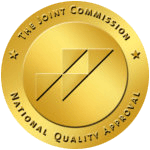What to Expect in a Drug or Alcohol Detox Program

Going into a drug or alcohol detox program is a big step and the first of many on your road to recovery and a healthy life. Whether you’ve made the choice to go, are considering for a loved one, or are still debating detox, learning more about it and what happens during detox can help you to gain confidence and go through with it more easily.
Drug and alcohol detox programs are aimed at substance users who might be chemically dependent, anyone addicted to a substance who needs to go into recovery, and those who are abusing substances illicitly but who might not necessarily need inpatient rehab. In each case, the detox process will follow the same path of intake, support and care, and medical attention, but the medical support you receive will vary greatly depending on the type of program and the substance you were abusing.
While your detox experience should depend on your unique mental, physical and emotional health needs, most detox programs will include the same schedule and general type of treatment.
Intake and Admission into Drug and Alcohol Detox
Admissions is the first step of drug detox, where a medical team works with you to determine the extent of addiction, which substances you are using, any mental or physical health problems you might have, and other details. This is typically accomplished through a series of interviews and questionnaires designed to help medical professionals create a custom detox program for you. Any detox program offering personalized support will continue to update this information as you go through the program and they learn more about you.
Insurance – Your drug detox center will likely help you with navigating your insurance coverage, but you can typically call your provider to verify that they cover your detox center of choice in advance.
Admissions – Once you’ve been accepted into a drug detox program, you’ll normally be taken to a residential facility complete with medical staff. Most will offer licensed nurses, at least one doctor specializing in addiction medicine, and psychologists or licensed counselors (or both).
Once you arrive, you’ll likely be asked to sign a written agreement, after which your belongings will be searched for drugs and alcohol and you may be asked to hand over valuables for safe-keeping until the treatment is over. From there, you’ll be settled into a room, which will be either a group or private room depending on the rehab option you chose. This process will typically take about 24 hours, after which detox treatment will begin.
What is Drug Detox
In most cases, you will enter drug detox and immediately begin the process of withdrawal. Depending on whether the person going into detox used or drank shortly before entering, withdrawal symptoms may have already begun or may begin after entering. In detox, your medical team will work to control the mental and physical side-effects of withdrawal to make you more comfortable, reduce symptoms, reduce trauma, and help you through the process as quickly as possible.
In most cases, drug and alcohol detox is administered through either social model, medically supported, or rapid detox.

Social Detox – Social model detox is one of the most common forms of detox, offering psychological support and counseling and medical support where necessary. This model gives users the opportunity to detox on their own, without prescription medication to speed up the process, typically in a group or social setting of peers. Here, users receive 24/7 monitoring from a medical team of licensed nurses and can receive immediate medical attention in case symptoms worsen. Social detox is most ideal for those addicted to alcohol and drugs such as cocaine and marijuana with a relatively light withdrawal profile.
Medically Supported Detox – Medical detox is a detox program using prescription medication to manage and reduce withdrawal symptoms and to manage cravings. In many cases, this involves a combination of general drugs such as benzodiazepines to reduce the risk of seizures and tremors and substance-specific medication such as buprenorphine for opiates to reduce withdrawal symptoms by replacing the opiate with a safer and more manageable drug. For example, a long-term opiate addict can switch to buprenorphine or methadone (or a combination of the two), go into therapy, and then slowly taper off the medication with little to no withdrawal symptoms after recovery is complete. This can help to reduce often-dangerous withdrawal symptoms and can give long-term addicts the means to get clean without risking relapse.
Rapid and Ultra-Rapid Detox – Rapid detox is the process of using medication to speed up the withdrawal process so that you can get clean and sober and go into recovery more quickly. Not all detox centers offer rapid or ultra-rapid detox.
In most cases, detox takes between 3 and 14 days depending on the substance, the type of detox, and the extent of your addiction or chemical dependence.
What’s Included in Inpatient Detox?
Any inpatient detox program will include a combination of social support, group therapy, emotional support from staff, counseling, and medical supervision and attention. The extent and quality of each element of care changes based on the program, personalization options, and the type of detox you choose.
Medical Supervision – No matter which type of detox you’re in, you need medical supervision to ensure that symptoms do not become more severe and that complications do not occur. For example, about 5% of all alcohol detox patients develop delirium tremens, a potentially fatal complication of withdrawal, and must be medically monitored and treated to prevent symptoms from worsening. Even relatively light cases of withdrawal can be medically significant, with risks of heart problems, choking, and major paranoia and panic interfering with the patient’s health and recovery.
Therapy and Counseling – While behavioral therapy intended to treat the behavioral problems behind addiction will begin after detox, it’s often a valuable part of detox as well. Counseling and support during detox give you the support you need to withdraw from the drug or alcohol while learning to handle cravings in a safe and healthy way, which will set you up for better success during recovery. This will include treatment for dual diagnosis disorders such as anxiety or depression which become evident during detox.
Clinical Comfort – Any detox program will focus attention on maintaining clinical comfort so that you can detox in dignity and comfort. This typically includes managing withdrawal symptoms, offering social and emotional support, and a comfortable or home-like environment throughout the withdrawal process.
Drug Detox Symptoms and Timelines
 While your precise symptoms and timeline will change a great deal depending on the substance, duration of abuse, drug detox program, and quantity of abuse, most drug and alcohol withdrawal follows the same general pattern of symptoms.
While your precise symptoms and timeline will change a great deal depending on the substance, duration of abuse, drug detox program, and quantity of abuse, most drug and alcohol withdrawal follows the same general pattern of symptoms.
- Anxiety and depression
- Insomnia and nightmares or disturbed sleep
- Tremors, shaking, and seizures
- Inability to focus and concentration issues
- General pain and muscle or joint pain
- Headaches
- Nausea and vomiting
- Increased heart rate
- Profuse sweating
These symptoms can range from about the same as a cold or flu to extremely severe and requiring medical attention. Here, even seemingly benign symptoms can be life-threatening, as dehydration, vomiting, and seizures can all take a huge toll on someone who’s health is already greatly impacted by long-term substance abuse.
Your drug detox timeline will also change a great deal depending on the substance you are detoxing from.
- Alcohol – Withdrawal symptoms begin within about 8 hours into alcohol detox and worsen over the next 24-72 hours. Delirium Tremens and other complications typically develop within the first 3-4 days and then begin to taper off over the next 1-2 weeks.
- Stimulants – Withdrawal symptoms for stimulants such as methamphetamine typically begin within a few hours and vanish in 3-4 days after the last dose. In some cases, longer withdrawal may be present.
- Sedatives – Sedatives including benzodiazepines typically develop withdrawal symptoms after a few hours, with major detox symptoms occurring after 4-5 days. Withdrawal symptoms may last for up to weeks or even months after the final dose without treatment.
- Opioids – Detox from opioids including heroin and most prescription painkillers typically begin withdrawal within the first 6-12 hours and subside within the first week. Slow-release narcotic painkillers will have a prolonged withdrawal phase, with symptoms appearing within 2-4 days of the final dose and lasting several weeks.
These detox timelines can vary a great deal depending on you, your health, and length and volume of abuse.
If you or a loved one is suffering from a substance dependence, entering a detox program for drug and alcohol addiction is the first step to getting your life back. While it’s often not enough to prevent a relapse and ensure recovery, it is a necessary step to ensure you safely recover from chemical dependence.

